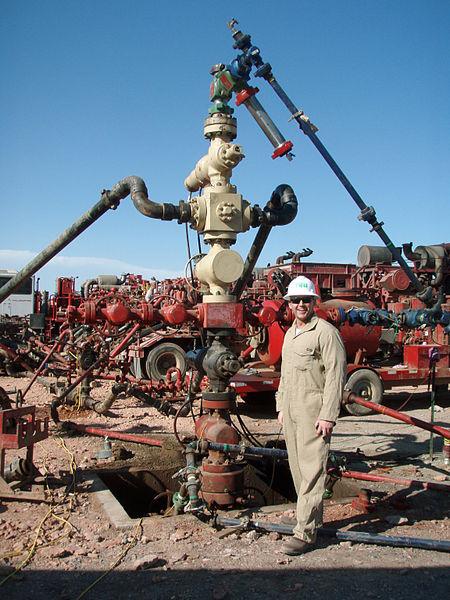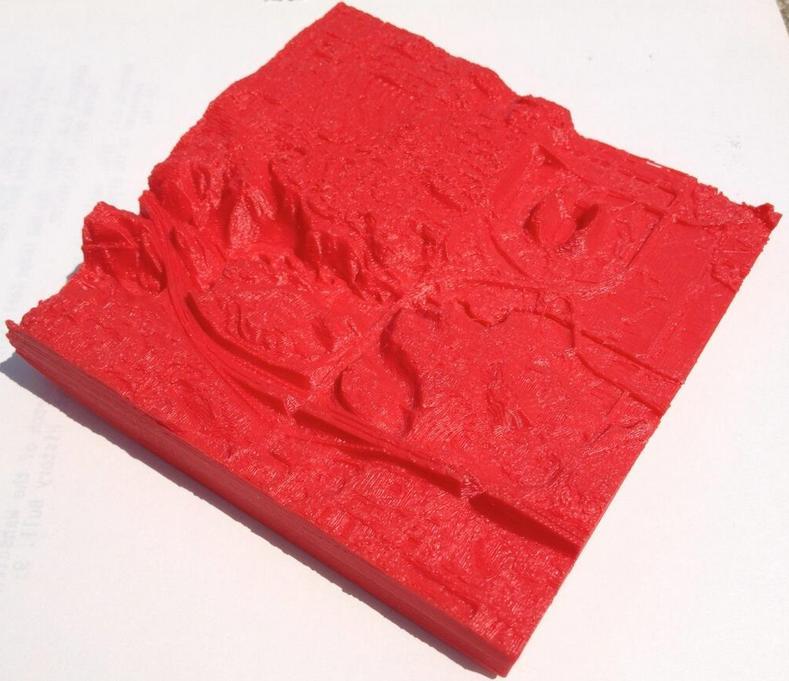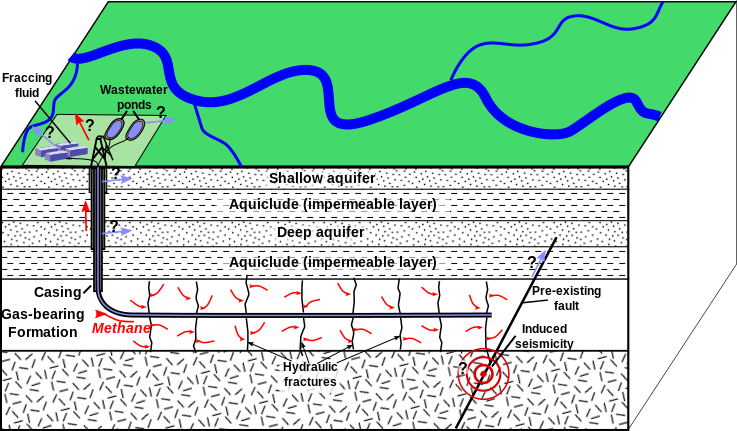Energy independence is something discussed quite a bit among politicians and economists in many countries throughout the world. Living in the United States, we know first hand how much it can cost for access to oil and natural gas. Even though we are becoming more self sufficient when it comes to energy use as a nation, in 2013 the US still imported about one third of the countries consumed petroleum from foreign nations. While, this is the lowest percentage in close to 30 years, there are still those who believe we must become more energy independent. With about 19 million barrels of petroleum consumed per day, the United States is the world’s largest consumer of this nonrenewable energy source.
One of the common methods of extracting oil is through a process called Hydraulic fracturing (fracking), which utilizes hydraulically pressurized liquid (water, chemicals and oftentimes sand) to fracture rocks, miles under the ground. In doing so, the surrounding rocks crack, hopefully releasing petroleum, and/or natural gas. However, many times this process is hit or miss, and oil drillers end up wasting precious time and, more importantly, heaps of money, coming up short in the drilling/fracking process. This is one reason why energy prices remain so high, as it costs a lot of money seeking out and drilling for oil and gas.
One geologist, named Franek Hasiuk, from Iowa State University, who is also the creator of GeoFabLab, believes that 3D printing may be able to vastly improve the efficiency of fracking practices around the world.
For those unfamiliar with rock formations, each rock has its own individual microscopic pore networks. When fracking takes place, depending on how these networks are set up, the rocks crack and crumble in different ways. No two rocks will crack in the exact same way, thus predicting the exact result of any given instance of hydraulic fracturing is impossible. This is where 3D printing is helping geologists study individual rocks, to determine how they will fracture when this hydraulic pressure is applied.
“Humans are visual and tactile,” Hasiuk explained to LiveScience. “When I have something I can hold in my hands, it makes it a lot easier to understand. What oil and gas companies want to know is ‘If I put a well in this location, how is it going to drain? If I frack these rocks how is it going to drain?'”
 By using vastly scaled up 3D printed models of these rocks and their networks of pores, geologists are able get a better look at exactly how liquid will flow through these rocks, and how they may end up fracturing.
By using vastly scaled up 3D printed models of these rocks and their networks of pores, geologists are able get a better look at exactly how liquid will flow through these rocks, and how they may end up fracturing.
Many individuals are against fracking because of some potential problems that it may cause. For example, many say that it has the ability to destroy underground reserves of water, while others have pointed out that if fracking occurs too close to a fault line, it could actually cause an earthquake. This is another reason why it is so important to find more efficient ways to take part in this 65-year old practice.
“3D printing lets geology have lab rats,” Hasiuk told LiveScience. “You can create identical copies of rocks with the same pore network and perform the same experiment several times. That takes some of the variables out and gives you meaningful results. If you know how the rocks will break, it may turn out that you need to frack each one in a slightly different way to get the most efficient and environmentally friendly process. Eventually we hope to get to the point that we can make predictions on where the oil will flow. If that means fewer wells need to be dug, then that’s great.”
We have seen 3D printing used for geological data in the past. One example is the 3D printed earthquake data that a man named Doug McCune created to get a better look at the seismic activity from the recent Napa Valley quake. Undoubtedly there will be more uses that geologists come up with for using 3D printing to get a better understanding of our planet and the very ground that we stand on. If science can figure out a way to improve on the efficiency of oil/gas drilling, this means that supply should increase which will in turn cause prices to decrease, and perhaps we could move one step closer to becoming energy independent.
What do you think about the potential that 3D printing has in the study of geology, specifically for creating more efficient ways of drilling for oil and gas? Discuss in the oil & gas fracking forum thread on 3DPB.com.
[Source: LiveScience]Subscribe to Our Email Newsletter
Stay up-to-date on all the latest news from the 3D printing industry and receive information and offers from third party vendors.
You May Also Like
3D Printing Webinar and Event Roundup: May 5, 2024
We’ve got a busy week of 3D printing events ahead of us, in Texas, Florida, Washington, D.C., Shanghai, and more. Webinar offerings will cover medical models, PolyJet 3D printing, additive...
High Stakes, High Speed: KVG Acquires 15 Nexa3D HSE 3D Printers to Boost Military Tech
As 3D printing increasingly intersects with defense and military logistics, a new partnership between Nexa3D and mission support logistics firm KVG stresses the growing importance of this technology in strategic...
Construction 3D Printing CEO Reflects on Being Female in Construction
Natalie Wadley, CEO of ChangeMaker3D, could hear the words of her daughter sitting next to her resounding in her head. “Mum, MUM, you’ve won!” Wadley had just won the prestigious...
3D Printing News Briefs, February 17, 2024: Shot Blasting, Service Bureaus, & More
In today’s 3D Printing News Briefs, we’re starting out with post-processing, as SKZ Würzburg is using a shot blast system from AM Solutions for its research. Moving on to business,...


































